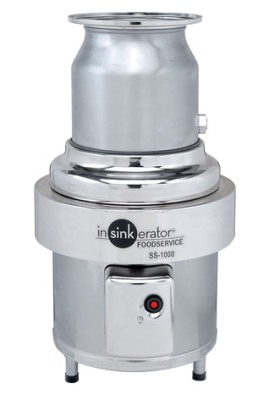InSinkErator, a Racine, Wisconsin-based business of Emerson, a producer of instant hot water dispensers and food waste disposers, has undertaken a professional life cycle assessment (LCA) study on the impact of a range of presently used food waste clearance systems.
The study has found that disposing of food waste into an in-sink cast-away is a good and eco-friendly method than sending it to landfills to cut down global warming. It also has found that the in-sink method provides energy-saving benefits when compared to commercial composting facilities.
 InSinkErator foodservice disposer Model SS-1000. Credit: InSinkErator
InSinkErator foodservice disposer Model SS-1000. Credit: InSinkErator
The study performed under stringent procedures examined four important systems that are used for the disposal of food waste that include advanced commercial composting, incineration, landfills and wastewater treatment. It found that waste food disposed in landfills has the potential of contributing to global warming twice as much as disposing the food utilizing an in-sink disposer connected to wastewater management facilities. It calculated that food wastes from around 30,000 households if disposed through in-sink disposers linked to wastewater treatment facilities instead of landfills can offset around 2,000 t of carbon dioxide discharges, which can be equated to obviating over 4.6 million miles of car traffic off the road.
The study assessed the procedure of utilizing in-sink disposers to send waste food to wastewater treatment facilities and found that it consumes less amount of energy when compared to commercial composting, incineration and landfill disposal methods. It also assessed the ecological impacts in the production, distribution and usage of the presently utilized food waste disposers in its study.
The study also pointed out the possibilities of generating renewable power from wastewater treatment plants equipped with anaerobic digesters to generate electricity from crushed food waste. It also pointed out how the biosolids of such facilities can be utilized as fertilizers.
Source: http://www.insinkerator.com/